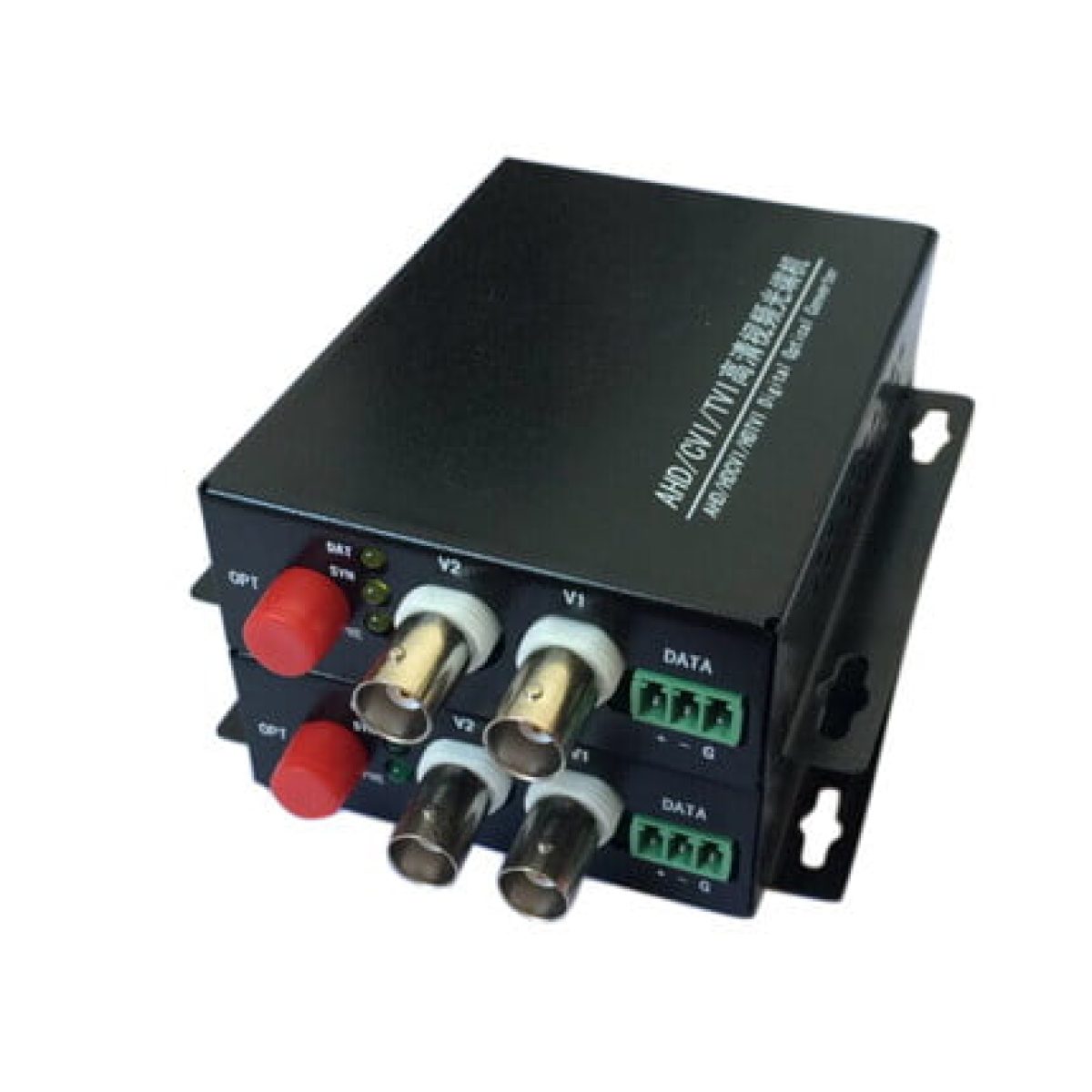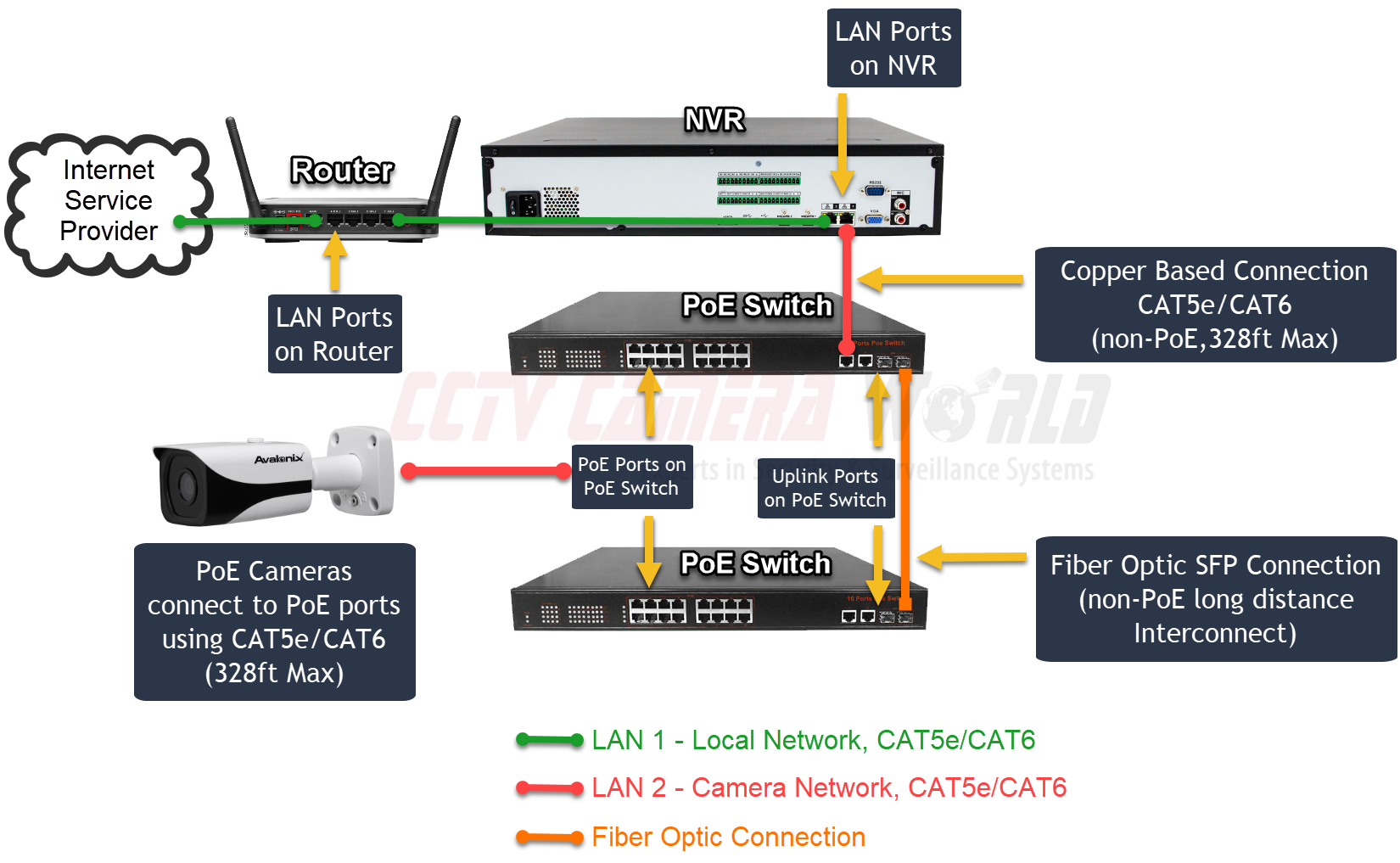Exactly How CCTV Cameras With Fiber Optic Outcome Enhance Long-Distance Monitoring
CCTV video cameras geared up with fiber optic output represent a significant advancement in long-distance surveillance modern technology, supplying unrivaled advantages over typical systems. By leveraging the residential or commercial properties of light transmission through fiber optics, these cams make sure high-def video clip top quality continues to be undamaged throughout extensive ranges while effectively mitigating electromagnetic interference. This innovation not just boosts photo quality yet additionally simplifies installment procedures and source allowance. As we check out the implications of this technology, one must consider just how these innovations are improving the landscape of safety and tracking systems in various applications.

Recognizing Fiber Optic Innovation
Fiber optic innovation is progressively used in long-distance monitoring applications because of its outstanding capability for data transmission. This modern technology utilizes thin hairs of glass or plastic fibers to send data as light signals, considerably reducing the depletion generally connected with conventional copper cables. The integral residential or commercial properties of fiber optics enable the transmission of big volumes of information over considerable ranges without loss of quality, making it an ideal selection for applications needing dependable interaction.
The concept of overall inner reflection facilitates the reliable transmission of light within the fiber, guaranteeing high transmission capacity and speed. Unlike electric signals in metal wires, fiber optics are unsusceptible to electromagnetic disturbance, boosting the integrity of information transmission. This characteristic is specifically valuable in atmospheres with high levels of electrical sound, such as industrial settings or city areas.
Furthermore, fiber optic cable televisions are lighter and a lot more adaptable than their copper counterparts, which streamlines installment and decreases architectural lots. With their sturdiness and resistance to ecological factors, fiber optics are fit for outdoor applications, thus expanding the reach of keeping track of systems. Consequently, fiber optic technology is ending up being a foundation in modern-day surveillance services, successfully resolving the challenges of long-distance monitoring.
Benefits of Fiber Optic CCTV
Using fiber optic modern technology in CCTV systems uses numerous advantages that enhance surveillance abilities. One of the main advantages is the capacity to send high-def video clip over lengthy ranges without substantial signal destruction. Unlike traditional copper cords, fiber optics can keep video high quality over considerable runs, making them ideal for large residential properties or remote tracking places.
Furthermore, fiber optic cords are less vulnerable to electromagnetic interference, which can misshape signals in traditional systems. This ensures more clear pictures and undisturbed service, vital for safety tracking. Additionally, fiber optics are inherently more secure, as intercepting signals calls for customized devices, thus providing an added layer of security against unapproved accessibility.
The lightweight and portable nature of fiber optic cords also streamlines installation, making it possible for much easier routing via tight rooms and minimizing overall labor prices. Their toughness makes them resistant to ecological factors such as dampness and temperature changes, extending the life expectancy of the surveillance system.
Finally, fiber optic systems can support a majority of cameras on a solitary network, optimizing resources and supplying scalability for future growth. These advantages make fiber optic CCTV systems an exceptional selection for modern monitoring demands.
Comparison With Standard Systems
When comparing CCTV systems, standard setups commonly drop short in a number of vital areas, especially in regards to range and signal integrity. Traditional coax cable systems usually encounter significant signal deterioration over cross countries, restricting effective tracking varies to roughly 300 feet (cctv fibre optic cable). Beyond this limit, image clearness reduces, leading to potential dead spots and minimized security effectiveness
In contrast, fiber optic systems preserve signal honesty over a lot greater distances, commonly going beyond numerous miles without loss of quality. This is mostly due to their capacity to send information as light signals, which are less at risk to electromagnetic disturbance than electrical signals used in conventional systems.
In addition, standard systems need more extensive maintenance and troubleshooting due to their susceptability to ecological variables such as dampness and electro-magnetic sound. Fiber optic systems, conversely, offer enhanced sturdiness and lower maintenance prices, as they are much less susceptible to damage.
Applications in Long-Distance Monitoring
The advantages of modern-day CCTV systems in preserving signal stability over cross countries open a large range of applications for long-distance monitoring. One significant application remains in metropolitan surveillance, where municipalities release fiber optic CCTV systems to keep an eye on public spaces, enhancing safety and security and preventing criminal activity. These systems give constant, premium video feeds that are critical for efficient legislation enforcement and emergency feedback.
One more vital application remains in industrial setups, where remote monitoring of making processes and unsafe areas is necessary. Fiber optic CCTV can hold up against severe environments and transfer information over fars away without loss of quality, permitting real-time oversight and minimizing dangers to personnel.
Furthermore, essential infrastructure such as flight terminals, railways, and pipelines profit from long-distance CCTV monitoring. Safety and security teams can look after large locations from centralized control areas, making certain rapid feedback to any kind of incidents.
In more tips here addition, in farming setups, farmers use long-distance CCTV to keep track of crops and animals, assisting to improve productivity and safety and security. Overall, the flexibility and integrity of fiber optic CCTV systems make them vital across various sectors, enabling extensive security options customized to certain demands.
Future Fads in Security Modern Technology
Just how will improvements in modern technology reshape the landscape of surveillance? The future of monitoring innovation is positioned for significant transformation, driven by innovations such as expert system (AI), artificial intelligence, and side computer. These technologies make it possible for real-time information analysis, allowing for fast recognition of possible risks and improved situational awareness.
AI-powered analytics our website will certainly boost the precision of facial acknowledgment systems, minimizing false positives and allowing more effective monitoring of individuals. The combination of Web of Points (IoT) gadgets will certainly assist in a seamless network of interconnected monitoring systems, boosting surveillance capacities throughout huge locations.
An additional pattern is the shift in the direction of cloud-based storage space remedies, which provide scalable data management and availability. This will certainly permit companies to keep substantial quantities of video clip data without the constraints of physical storage space, while guaranteeing that info is easily retrievable.

Verdict
To conclude, CCTV electronic cameras furnished with fiber optic output represent a substantial development in long-distance surveillance capabilities. The use of fiber optic technology makes sure high-def video transmission over considerable distances without high quality destruction, while additionally offering resistance visite site to electro-magnetic interference. The lightweight and versatile nature of these systems promotes streamlined setup and source optimization. As security technology remains to advance, the adoption of fiber optic services will likely play an essential duty in enhancing safety and security across varied applications.